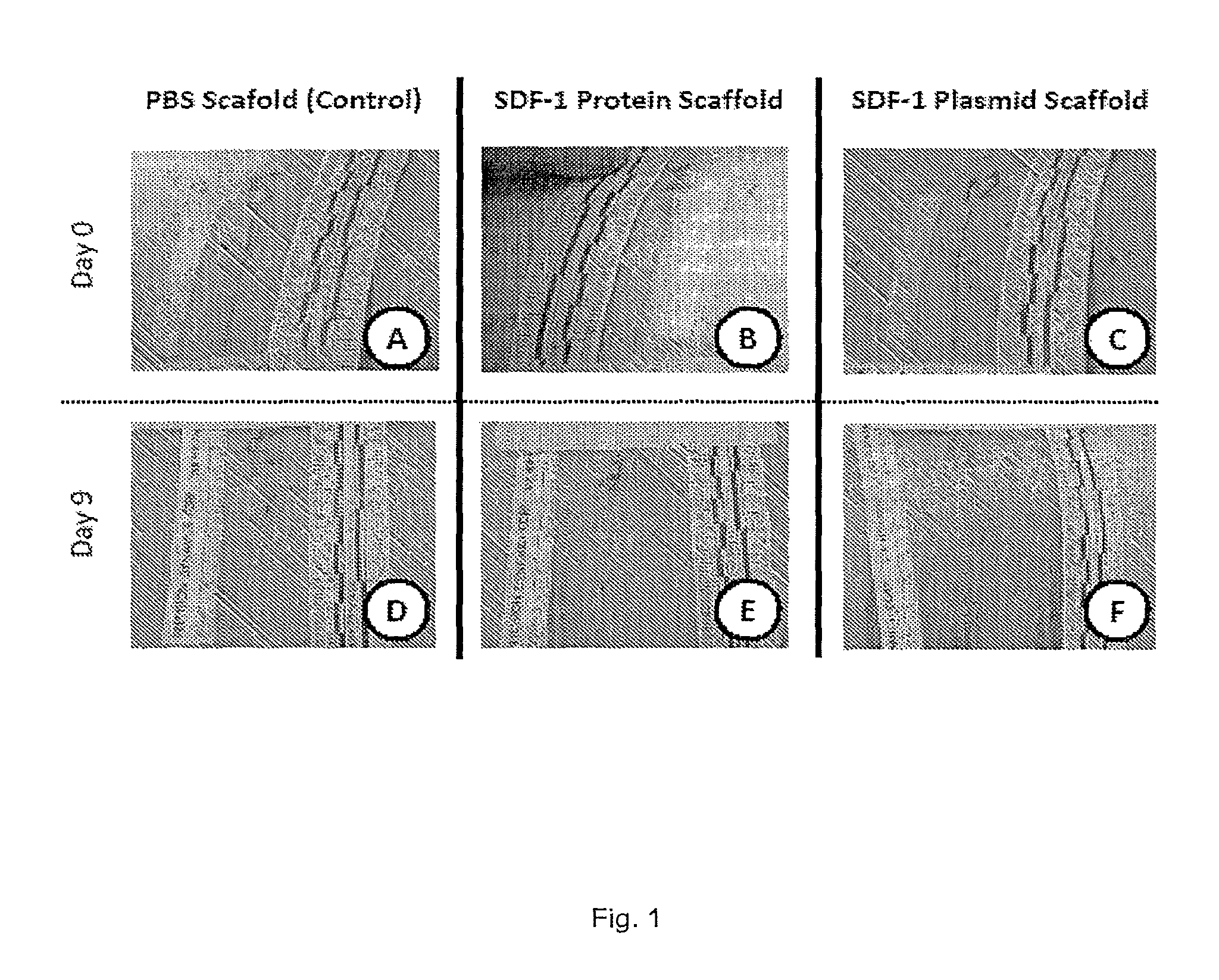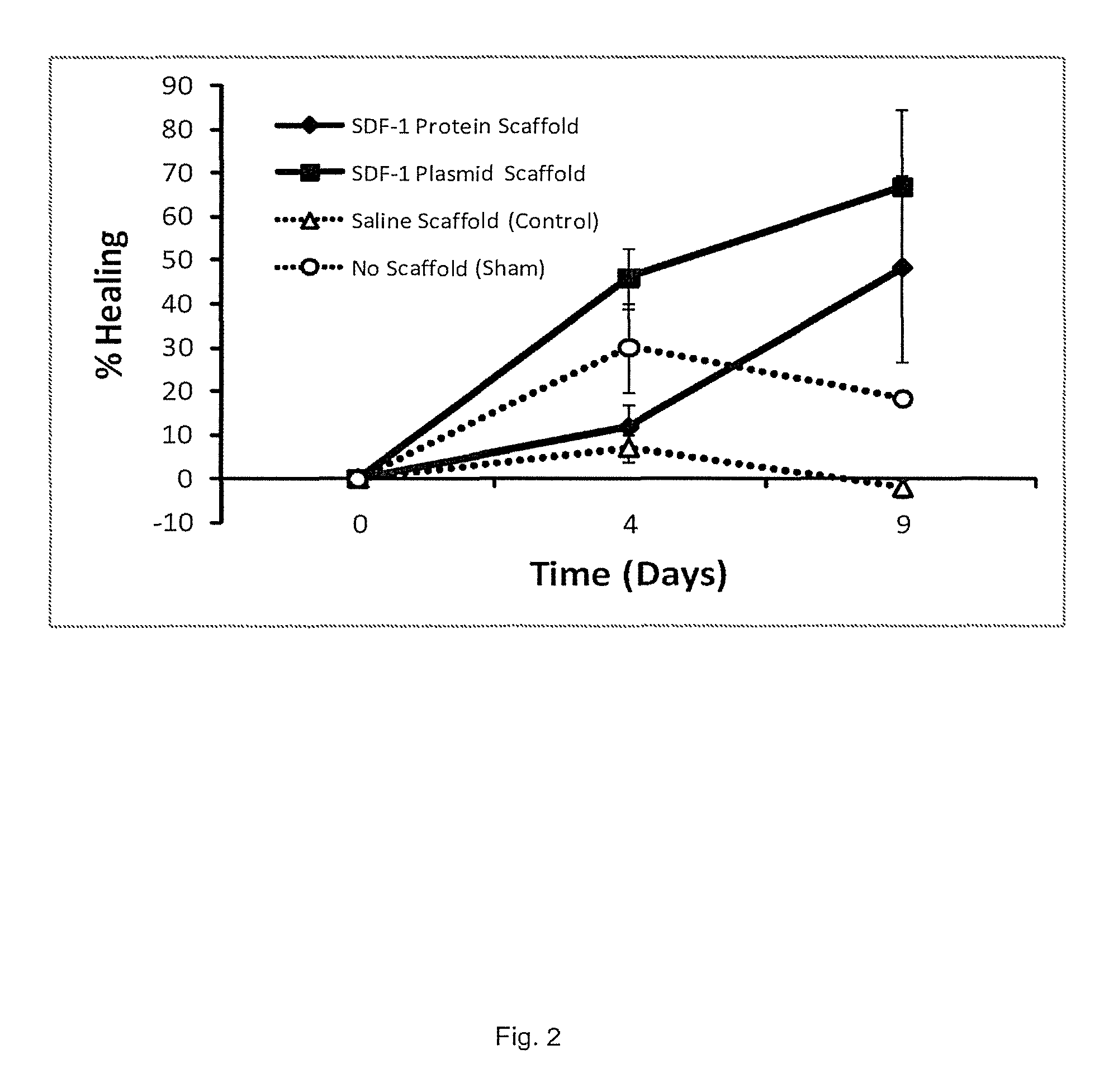Use of SDF-1 to mitigate scar formation
a technology of scar formation and sdf-1, which is applied in the field of composition and promotion of wound healing, can solve the problems of limited success in accelerating wound healing with pharmacological agents, affecting the healing effect of wounds, and disrupting the microvasculature of wounds, etc., to achieve the effect of reducing the scar formation and/or around the wound, promoting or accelerating wound healing, and inhibiting cell apoptosis
- Summary
- Abstract
- Description
- Claims
- Application Information
AI Technical Summary
Benefits of technology
Problems solved by technology
Method used
Image
Examples
example 1
Stromal Cell-Derived Factor-1 Release in Alginate Scaffolds: Characterization and Ability to Accelerate Wound Healing
[0102]We hypothesized that a slow-release delivery of either SDF-1 protein or plasmid would increase its effectiveness on wound healing. Therefore, we employed a clinically-relevant delivery system, an alginate scaffold, to deliver SDF-1 over time to a porcine acute surgical wound model. We characterize SDF-1 delivery using alginate scaffolds in vitro, and demonstrated the potential for therapeutic benefit in vivo by using the scaffolds to deliver SDF-1 protein and plasmid to acute surgical wounds.
Preparation of Scaffolds for In Vivo Application
[0103]For the in vivo application, custom 1 cm×6 cm alginate scaffolds were produced by the same process described above. Scaffolds were then loaded with SDF-1 plasmid (n=6), SDF-1 protein (n=10), or phosphate buffered saline (PBS) (n=4) by the process described below.
[0104]For the SDF-1 plasmid scaffolds, a plasmid was created...
PUM
| Property | Measurement | Unit |
|---|---|---|
| time | aaaaa | aaaaa |
| diameters | aaaaa | aaaaa |
| diameters | aaaaa | aaaaa |
Abstract
Description
Claims
Application Information
 Login to View More
Login to View More - R&D
- Intellectual Property
- Life Sciences
- Materials
- Tech Scout
- Unparalleled Data Quality
- Higher Quality Content
- 60% Fewer Hallucinations
Browse by: Latest US Patents, China's latest patents, Technical Efficacy Thesaurus, Application Domain, Technology Topic, Popular Technical Reports.
© 2025 PatSnap. All rights reserved.Legal|Privacy policy|Modern Slavery Act Transparency Statement|Sitemap|About US| Contact US: help@patsnap.com


